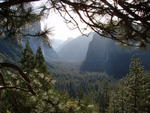While most people know what a cave is, karst is a term that is less known. Karst is a landform usually composed of carbonate rocks such as limestone, dolomite, marble, or gypsum and typically has sinking streams, sinkholes, caves, and associated springs. The most recent sinkhole that opened up under the National Corvette Museum in Bowling Green, Kentucky is a good example of the dynamics of a sinkhole forming in a karst terrain. It is also a good example of the problems that are associated with living on karst terrains.
With a mandate from Congress, the National Cave & Karst Research Institute (NCKRI) was created in 1998 to:
- further the science of speleology;
- centralize and standardize speleological information;
- foster interdisciplinary cooperation in cave and karst research programs;
- promote public education;
- promote national and international cooperation in protecting the environment for the benefit of cave and karst landforms; and
- promote and develop environmentally sound and sustainable resource management practices.
NCKRI’s report identifies an additional 50 parks with potential for karst resources, gathers information, and makes observations and recommendations within four categories -- general, research, management, and education/interpretation.
To gather information, NCKRI used an online survey that parks were invited to complete. This report provides methodology used through survey development, identification of relevant NPS units, data collection, and data analysis. Analysis of the answers received in each section led to a number of observations and recommendations that will help the NPS manage cave and karst resources for their long-term protection and conservation along with helping parks to provide up-to-date accurate information for park staff and visitors.
Using documented information already known on the cave and karst resources found within park units, NCKRI also compared the most recent karst information from the US Geological Survey with park unit locations. Combining knowledge of park units with known cave and karst resources and those identified through the USGS karst information, NCKRI concluded that there should be at least 191 park units with caves and/or karst features. The list of park units with known or potential cave and karst resources are found in Appendix F of the report.


